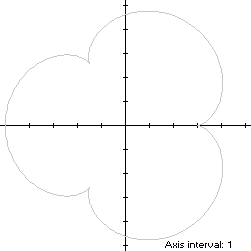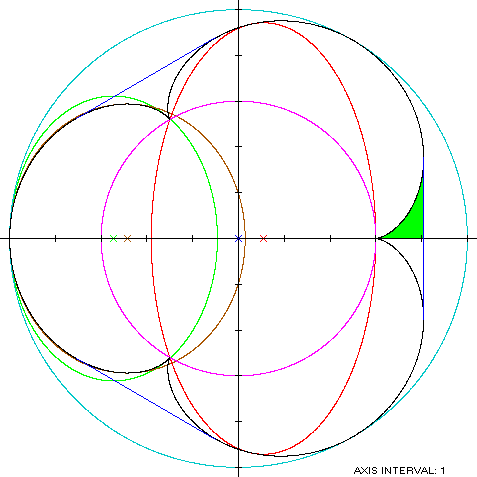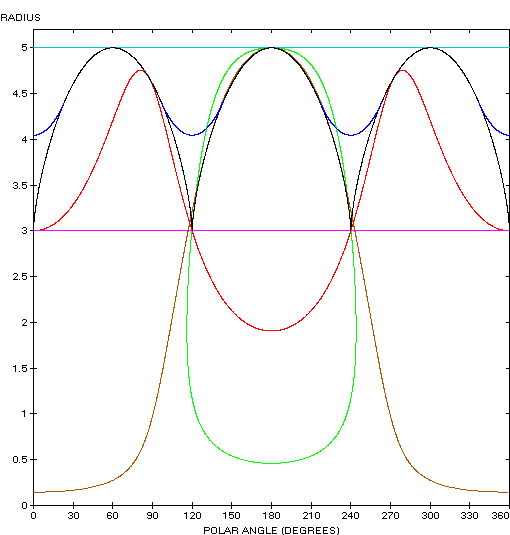Balmoral Software

Balmoral Software

x(t) = 4cos(t) - cos(4t)The curve is traced out in a counterclockwise direction, starting from its right cusp at (3,0). Its abscissa extrema are (-5,0) aty(t) = 4sin(t) - sin(4t), 0 ≤ t < 2π
at t = ±π/5, so the epicycloid is non-convex by the multiple local extrema test. Its ordinate extrema are
at t = ±2π/5, so the width x height of its bounding rectangle is
x(t + 2π/3) = cos(2π/3)x(t) - sin(2π/3)y(t)and
y(t + 2π/3) = sin(2π/3)x(t) + cos(2π/3)y(t),the conditions (R1) of Lemma R are satisfied and the epicycloid is rotationally symmetric with period 2π/3.
x'(t) = 4[sin(4t) - sin(t)]so by (L1), the perimeter of S isy'(t) = 4[cos(t) - cos(4t)],
and by (A1), the area of S is
 and then repeating the pattern by rotating around the origin at 2π/3
intervals. By
(L2), the perimeter of the convex hull is
and then repeating the pattern by rotating around the origin at 2π/3
intervals. By
(L2), the perimeter of the convex hull is
which is about 8% shorter than that of the epicycloid.
To compute the area of the convex hull, we can see by
(A1), that the area A1 of the
region in solid green in the left diagram below is the integral of
 at the maximum abscissa point:
at the maximum abscissa point:
Therefore, the area of the convex hull is
which is about 4% more than the area of the epicycloid.
x2(t) + y2(t) = 17 - 8cos(3t)ranges from 9 to 25, so its inradius is 3 and its circumradius is 5.
a = 2.453277
b = 4.712299
c = 0.546723
Perimeter = 23.074230
Area = 36.318614
The corresponding abscissa is the center of the ellipse:
For tangency at the left edge (-5,0), we have
To verify that this ellipse encloses the lobe of S, we have
The ellipse appears to pass through the points (0,±1), but this an illusion due to the limited resolution of the image, since
rather than 1. Although the ellipse is close-fitting, it is not the minimum-area circumellipse of the lobe, which can be found by numerical search:
a = 2.269858and is shown in green in the left diagram below.
b = 3.112156
c = -2.730142 = a - 5
Figure Parameters Perimeter Area Centroid Lobe ellipse a =
b =17.335157 23.755802 (-2.427051,0) Incircle R = 3 18.849556 28.274334 Inellipse a = 2.453277
b = 4.71229923.074230 36.318614 (0.546723,0) Epicycloid 32 62.831853 Convex hull 29.389263 65.552643 Circumcircle R = 5 31.415927 78.539816


Copyright © 2021 Balmoral Software (http://www.balmoralsoftware.com). All rights reserved.